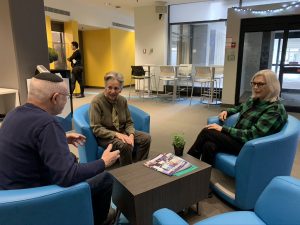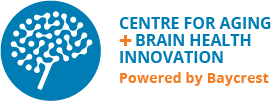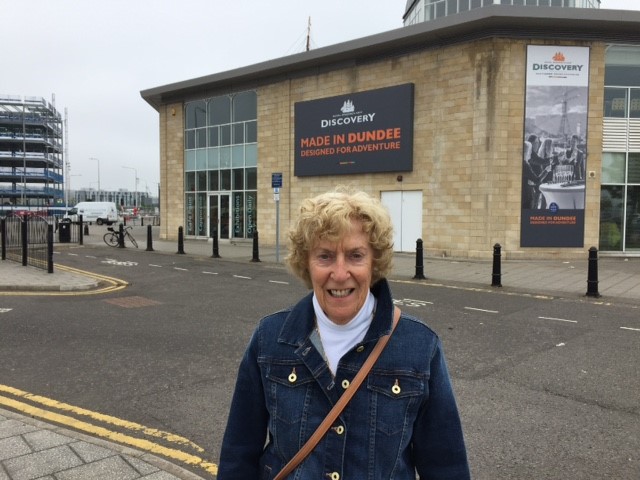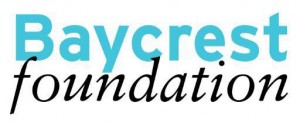In this blog, CABHI Senior Advisory Panel member, Anne Kerr shares her thoughts on the importance of incorporating social connectedness in agetech designs to enhance older adults’ quality of life and reduce social isolation.
As an older adult, I often think about the way social connections impact us as we age. While we experience aging differently, many people in my age group are concerned about the same thing: being alone. We’re worried about being isolated from our communities and having little or no self-determination to pursue everyday life. This is a frightening prospect that gives me a sense of dread. Yet for many, it’s a reality.
While younger people are immersed in work, family, sports, and many other activities to keep them occupied, older adults may experience more challenges in partaking in these activities and participating in their communities. Older adults also tend to live alone, or in a support facility where they are less likely to have access to physical and social activities. As such, we must work to ensure that older adults are integrated into their communities and continue to feel a sense of self-worth and dignity in their daily lives.
As smart and dedicated innovators work to address these concerns, it’s important for them to integrate social connectedness throughout their solution development process. There should also be an awareness that some new technologies can reduce human interaction, because no technology can replace human touch.
The Centre for Aging + Brain Health Innovation’s (CABHI) Senior Advisory Panel works with innovators to raise awareness about the basic need for human connection, with a focus on integrating social connectedness into innovations aimed at improving the lives of older adults.

Members of CABHI’s SAP
We know that aging and brain health innovators do not have an easy task. They are challenged with increasing efficiencies in long-term care facilities, providing cost-saving solutions, and improving safety measures to protect residents and caregivers from possible harm or injury. Solutions that support enhanced hygiene procedures, medical assistance, physical and cognitive health and so many other demands, are also required to meet the needs of a growing older adult community, and the people who support them.
But where does seeing, hearing, or touching another human being fit into all of these demands? These are critical elements in caring for the older population because we know that many health issues in older adults can be attributed to loneliness and isolation. These health issues can lead to greater demands on caregivers and the healthcare system.
There may be an opportunity for social interaction throughout the development or implementation stage of a product. Innovators could use end-users (or potential customers) as a focus group. This could encourage communication and relationship-building among participating older adults. For example, it would also be beneficial to present an outline of the solution to older adults at the conceptual stage of the innovation. The innovator could then determine whether the solution being put forward is met with enthusiasm from potential users. Caregivers should also be asked if they are comfortable with the level of resources required to implement a solution.
Community volunteers are a great resource for implementing new innovative processes or procedures. Involving volunteers could provide intergenerational exchanges and cognitive stimulation for older adults.
Innovations with a focus on social connectedness can also benefit client-facing consumers. Studies show that social connectedness can reduce depression, sleep deprivation and stress. Lowering the frequency of these conditions can reduce caregiver burn out and the associated cost of medical interventions. Increasing the health and well-being of their clients is a major benefit for healthcare organizations looking to implement innovations.
A simple hello or a smile can help older adults feel like they are not alone and can improve the health and well-being of our older adult community and all of the people included in their lives. Through their solutions, innovators have an opportunity to create a world where technology brings us together, instead of driving us apart.
Here are some questions innovators can ask themselves when designing agetech solutions for seniors:
- Where are some of the human touch points in the solutions that you are developing?
- Does your solution include features that connect the user to others, enabling communication and relationship building?
- Will your solution stimulate the user’s cognitive abilities, tap into their strengths and abilities, and improve their feelings of well-being?
- Does your solution have the unintended consequence of reducing the level or frequency of personal contact? How might you address that?
More on the author:
 Anne is a professional accountant with over thirty years of senior management experience. She has worked in Real Estate Development, Academia, for a Crown Corporation and not-for-profit organizations in positions including Vice-President and Executive Director. After retiring she volunteered with organizations that promote vegetarian diets as well as meditation and healthy lifestyle practices. She has taken courses on the workings of the human brain as well as reading about how the future of technology may enhance the human experience. Anne believes strongly in physical fitness being an overall benefit to all aspects of health. She hopes that the combination of business acumen along with her lifestyle practices will be of benefit to the panel and help improve the lives of seniors. Anne completed her university education in Scotland and holds a CPA designation.
Anne is a professional accountant with over thirty years of senior management experience. She has worked in Real Estate Development, Academia, for a Crown Corporation and not-for-profit organizations in positions including Vice-President and Executive Director. After retiring she volunteered with organizations that promote vegetarian diets as well as meditation and healthy lifestyle practices. She has taken courses on the workings of the human brain as well as reading about how the future of technology may enhance the human experience. Anne believes strongly in physical fitness being an overall benefit to all aspects of health. She hopes that the combination of business acumen along with her lifestyle practices will be of benefit to the panel and help improve the lives of seniors. Anne completed her university education in Scotland and holds a CPA designation.
Learn more on how CABHI’s Seniors Advisory Panel is informing life-changing agetech solutions.


